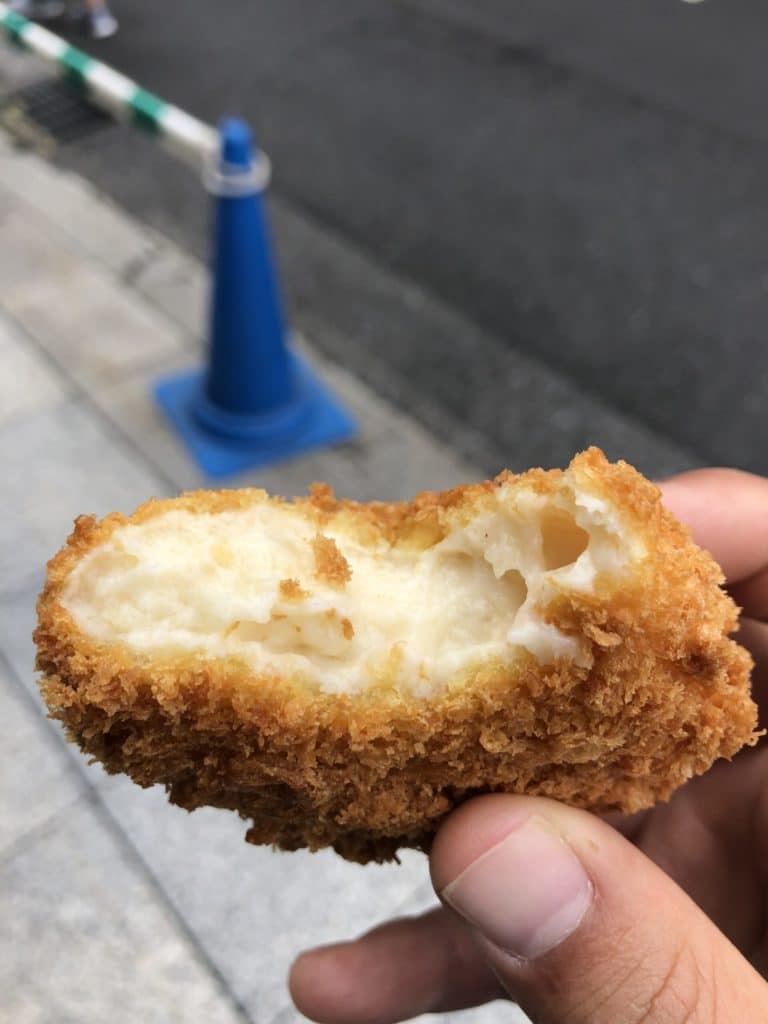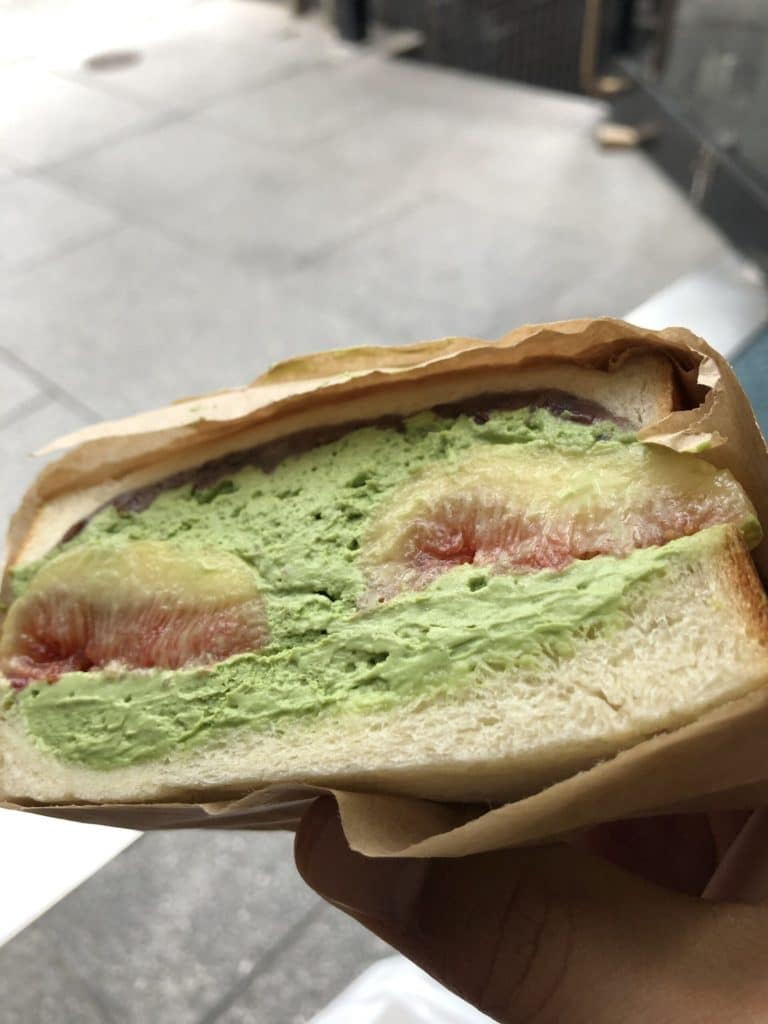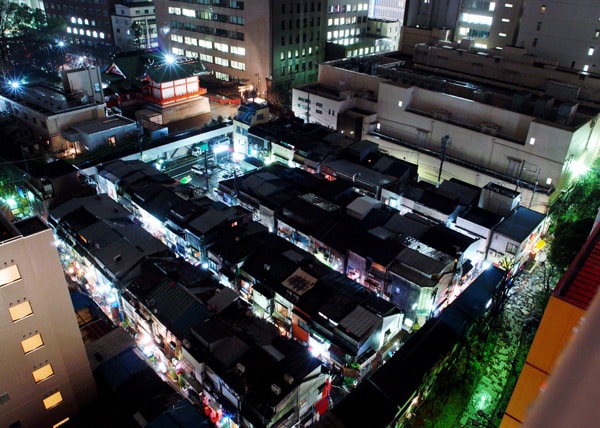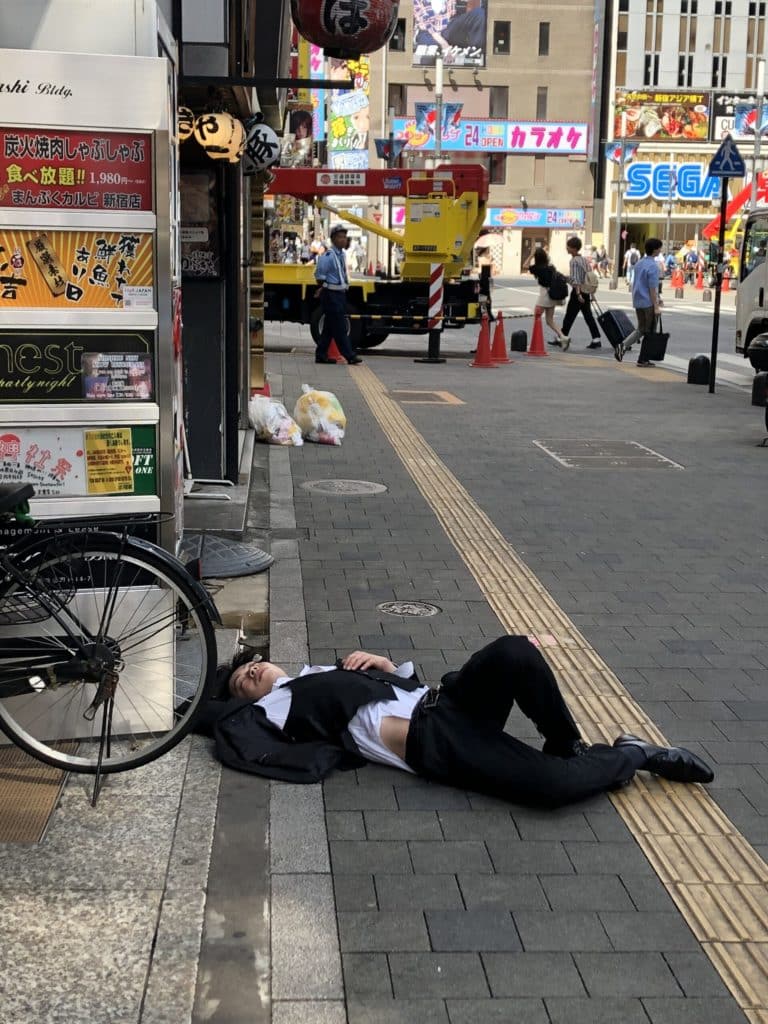
In a megalopolis such as Tokyo, there obviously is no one spot where one can see everything, but a visitor can see a lot in Shinjuku.
Shinjuku is a special ward in Tokyo – special wards being largely autonomous subdivisions of prefectures. It includes the busiest railway station in the world (Shinjuku Station), Tokyo’s largest concentration of skyscrapers and various government buildings, many bars and clubs, karaoke rooms, a red-light district, a large urban park, the New National Stadium built for the 2020 (now 2021) Olympics, countless opportunities for shopping aficionados, and much more.
Among many specific attractions are the Godzilla head atop the Toho building; the Samurai Museum; Yayoi Kusama’s pop art museum; The Robot Restaurant (currently closed – maybe permanently – because of the Covid-19 pandemic); the Park Hyatt Hotel, where the movie “Lost in Translation” was filmed (and home to a great bar and restaurant with an amazing view); Shin Okubo, the largest Korean area in Tokyo; Omoide Yokocho, a narrow alley packed with small Japanese-style pubs; and a large park called Shinjuku Gyoen with Mount Hakone looming over it.
To say that one could spend a day here is an understatement.
“Days” would be more like it.
Now a major center of Tokyo similar to Ginza and Marunouchi, Shinjuku came together over a long period of time – hundreds of years, really – as nearby small towns and villages grew into one large community, retaining their own identities to one degree or another. The area was spared much of the devastation from the great earthquake of 1923. The present ward was established on March 15, 1947, with the merger of several former wards.
In 1991, the Tokyo Metropolitan Government moved from the Marunouchi district of Chiyoda to its current building in Shinjuku, and that structure includes an observation deck popular with visitors. Many large companies have either their headquarters or Tokyo offices near Shinjuku Station.
The area east of Shinjuku Station includes the city hall and the flagship Isetan department store (with its amazing multi-level food hall basement), as well as sectors such as the Kabukicho red-light district; Shinjuku san-chome, a more chill bar area with lots of bars that spin classic soul on vinyl; the Shinjuku Gyoen park that serves as a quiet respite in the middle of a bustling, noisy area; and Shinjuku-Ni-chome, the most well-known gay district of Tokyo.

A steamy cheese-and-potato croquette from Isetan Department Store Food Hall (photo: Shane Barclay) 
Matcha cream and fig sandwich from Isetan Department Store Food Hall (photo: Shane Barclay)
The area west of Shinjuku Station, historically known as Yodobashi, could be described as Tokyo’s skyscraper district. The Tokyo Metropolitan Government Building is there and some of the tallest buildings in the metropolitan area.
Totsuka includes the northern portion of Shinjuku surrounding Takadanobaba Station and Waseda University. The Takadanobabaarea is a commuter hub and a major residential and nightlife area for students. Yotsuya is an upscale residential and commercial district within Shinjuku. The Arakichō area, at one time a bustling Geisha district, is well known for its many small restaurants and bars.
Of course, there are many eating and drinking opportunities in Shinjuku, and signing up for an actual bar tour is a good idea because the guides can often get visitors into bars that they ordinarily wouldn’t know about. Aside from that, though, Shinjuku is a great area in which to simply walk through, explore, and people watch. It is a gold mine for photography buffs, who could spend days or weeks there and continue to find new subjects for images. Kabukicho, for example, is always lit by a jumble of neon lights, which comprise excellent photos.

Golden Gai, seen from above (photo: Wikimedia Commons) 
A weary bar patron takes a nap before heading home the morning after a big night out at the Shinjuku bars (photo: Shane Barclay)
At the other end of the spectrum are the narrow alleys of places like the Arakichō area and Golden Gai.
Interestingly, Golden Gai – comprised of six small alleys connected by passageways which are only about wide enough for a single person to pass through – does not allow photography of any sort unless the area’s business promotion association grants permission. The alleys are private roads, not public ones, and more than 200 bars and eating establishments managed to cram into the small space.
Golden Gai provides a glimpse of what much of Tokyo once looked like. It has been written that the yakuza, the Japanese organized crime group, burned many buildings in Tokyo during the 1960s so developers could buy the land. However, Golden Gai was spared because many of its boosters took turns guarding the area.
The surrounding area has wider roads and larger buildings, but Golden Gai has retained its uniqueness in the face of modernization.
Some might view it as being run down, while others would praise it as shabby-chic. The area is poorly lit, adding to the atmosphere.
Most of the structures in Golden Gai are just a few feet wide and nearly touch those directly adjacent. Most have small bars downstairs and either another bar or a small flat above.
Some of the bars can accommodate only five or fewer customers at any one time. However, visitors should not expect it to be a bargain … it’s not cheap to drink there.
Many musicians, artists, directors, writers, academics, and actors spend time in Golden Gai. A lot of the bars only welcome regular customers, but others allow non-regulars and tourists.
For further information about Shinjuku and things to do there, here are some useful links:
- https://jw-webmagazine.com/shinjuku-area-ultimate-guide-2017-81afbb3ff035/
- https://www.neverendingvoyage.com/best-area-to-stay-in-tokyo/
- https://trulytokyo.com/shinjuku/
- https://www.japan.travel/en/destinations/kanto/tokyo/shinjuku/
For more “Beyond Baseball” check out the rest of our website.